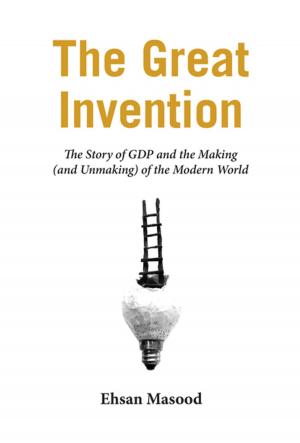Frankenstein: How A Monster Became an Icon: The Science and Enduring Allure of Mary Shelley's Creation
Nonfiction, Social & Cultural Studies, Social Science, Cultural Studies, Popular Culture, Fiction & Literature, Horror, Science Fiction & Fantasy| Author: | Sidney Perkowitz, Eddy von Mueller | ISBN: | 9781681776972 |
| Publisher: | Pegasus Books | Publication: | January 2, 2018 |
| Imprint: | Pegasus Books | Language: | English |
| Author: | Sidney Perkowitz, Eddy von Mueller |
| ISBN: | 9781681776972 |
| Publisher: | Pegasus Books |
| Publication: | January 2, 2018 |
| Imprint: | Pegasus Books |
| Language: | English |
Few creations have risen from literary origins to reach world-wide importance like Frankenstein. This landmark volume celebrates the bicentenary of Mary Shelley's creation and its indelible impact on art and culture.
The tale of a tormented creature created in a laboratory began on a rainy night in 1816 in the imagination of a nineteen-year-old Mary Wollstonecraft Shelley, newly married to the celebrated Romantic poet Percy Shelley. Since its publication two years later, in 1818, Frankenstein: Or, t**he Modern Prometheus has spread around the globe through every possible medium and variation. Frankenstein has not been out of print once in 200 years. It has appeared in hundreds of editions, perhaps more than any other novel. It has inspired a multitude of stage and screen adaptations, the latest appearing just last year. “Frankenstein” has become an indelible part of popular culture, and is shorthand for anything bizarre and human-made; for instance, genetically modified crops are “Frankenfood.”
Conversely, Frankenstein’s monster has also become a benign Halloween favorite. Yet for all its long history, Frankenstein's central premise—that science, not magic or God, can create a living being, and thus these creators must answer for their actions as humans, not Gods—is most relevant today as scientists approach creating synthetic life.
In its popular and cultural weight and its expression of the ethical issues raised by the advance of science, physicist Sidney Perkowitz and film expert Eddy von Muller have brought together scholars and scientists, artists and directions—including Mel Brooks—to celebrate and examine Mary Shelley’s marvelous creation and its legacy as the monster moves into his next century.
Few creations have risen from literary origins to reach world-wide importance like Frankenstein. This landmark volume celebrates the bicentenary of Mary Shelley's creation and its indelible impact on art and culture.
The tale of a tormented creature created in a laboratory began on a rainy night in 1816 in the imagination of a nineteen-year-old Mary Wollstonecraft Shelley, newly married to the celebrated Romantic poet Percy Shelley. Since its publication two years later, in 1818, Frankenstein: Or, t**he Modern Prometheus has spread around the globe through every possible medium and variation. Frankenstein has not been out of print once in 200 years. It has appeared in hundreds of editions, perhaps more than any other novel. It has inspired a multitude of stage and screen adaptations, the latest appearing just last year. “Frankenstein” has become an indelible part of popular culture, and is shorthand for anything bizarre and human-made; for instance, genetically modified crops are “Frankenfood.”
Conversely, Frankenstein’s monster has also become a benign Halloween favorite. Yet for all its long history, Frankenstein's central premise—that science, not magic or God, can create a living being, and thus these creators must answer for their actions as humans, not Gods—is most relevant today as scientists approach creating synthetic life.
In its popular and cultural weight and its expression of the ethical issues raised by the advance of science, physicist Sidney Perkowitz and film expert Eddy von Muller have brought together scholars and scientists, artists and directions—including Mel Brooks—to celebrate and examine Mary Shelley’s marvelous creation and its legacy as the monster moves into his next century.















